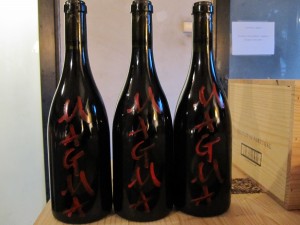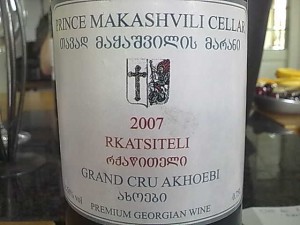Nov 28, 2010
Frank Cornelissen – 2010 News – Our 10th Anniversary Harvest!
Frank was kind enough to send me this email and allow me to post it here for my readers. Thank you Frank.
Dear friends,
The picking of the 2010 harvest finished on November 1st.
A special harvest in many ways for me. First of all as this is my 10th harvest (we survived the huge financial and economic risks), second as this was probably the most difficult one so far because of the risks of loosing over half of the crop (but we didn’t!) and third because of the new cellar we have inaugurated with this harvest (the extra space was a blessing!).
2010 was dominated by a lot of rain since the beginning of the season; a lot of vegetation resulted in vines with more vigor than usual, needing more canopy management, especially the vineyards in the lower quotes. The high vineyards did very well in terms of extra water overall during the year and this was a blessing for the vines. The summer was dry as usual and the ripening this year was accelerated over this period. Autumn was epic in terms of excessive humidity. Most of all we lacked the classic winds this year that keep the air dry; nights and mornings were dominated by humidity and the extra rain showers weren’t a help.
We have lost quite a bit of white grapes this year as at a given moment I decided to go for botrytis which in the end hardly didn’t develop and so we cut down lots of grapes due to the grey mould developing. It was either this or picking unripe watery grapes… difficult decisions especially when looking at all the grapes on the ground…
The difficulty in keeping grapes healthy was great and monitoring and cleaning to push to ripeness was extremely demanding this year with long days in the vineyards and even longer nights in the cellar. The new cellar with more space to work in an ordered and cleanly way came at the right moment and was a blessing in these difficult conditions.
All is fermenting for the moment and we will be pressing a bit earlier also as the fermentations on the reds are finishing faster than usual. The whites ferment slowly and doesn’t seem to want to stop… The rosato has been produced this year and was separated from the skins on November 7th. We used the running juice only and have 2 anforas aging with the malolactic nearly finished.
Another novelty is the arrival of a new person to our crew: Samuel Vinciulli, a graduate in enology who has “passed the test” during our harvest, will stay for two years to join us. Australian-Italian, Sam has worked in many different cellars and will be a welcome help with his positive energy and expertise in the cellar so that we can move into another level of quality and research over the next decade.
During the winter period we will finally open our blog to be able to inform our clients and friends of our “works-in-progress”.
We will keep you updated!
Cordiali saluti,
Frank




































